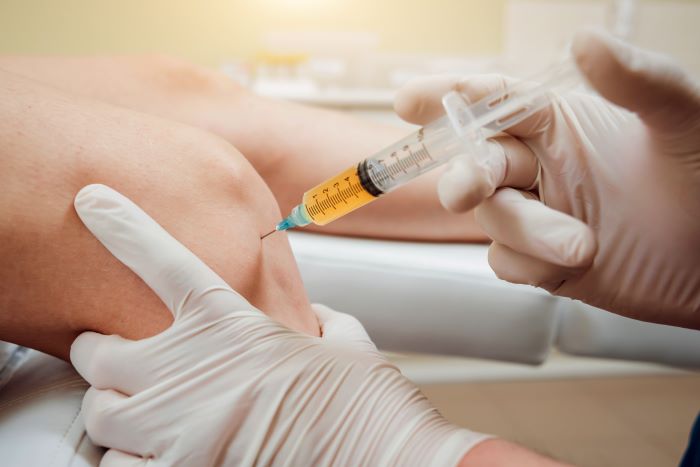Highly Processed Foods Could Be Addictive As Tobacco, Study Says
You might have heard the notion that processed foods are unhealthy, but that should
You might have heard the notion that processed foods are unhealthy, but that should
Often skin cancer is associated with exposure to ultraviolet light, but it turns out

Although most parents are concerned about the impact video games can have on their

A new research has shown that sleeping for less than five hours per night

A new study has established that strict parenting can lead to depression in children.
A new study has found that smoking cigarettes can block oestrogen production in women’s
Humans often sleep because they get to sleep, according to sleep researcher William Dement.
You may have heard that eating a balanced diet can reduce the risk for
According to new research, having dinner regularly as a family could be the key
According to the latest research, practicing mind relaxation techniques such as medication in older
Maintaining a healthy lifestyle is sometimes challenging, particularly if you’re constantly exposed to unhealthy

Exercise has numerous advantageous health effects in addition to aiding in weight loss or
Platelet-rich plasma is just blood with more platelets in it than usual.
PRP injections might be able to treat a number of injuries and conditions that affect the muscles and bones.
Plasma from the patient’s blood is injected into the injured knee or tendon, for example. In some situations, the doctor might use ultrasound to help guide the injection. The idea is to increase the amount of certain bio-proteins or hormones, called growth factors, in a certain area to speed up the healing process.
PRP injections might be able to treat a number of injuries and conditions that affect the muscles and bones. For example, chronic tendon injuries like tennis elbow or jumper’s knee can take a long time to heal. Adding PRP shots to a treatment plan can speed up the healing process, reduce pain, and make it possible to get back to activities sooner. Early research suggests that PRP injections may help treat the pain of osteoarthritis by modulating the joint movement and reducing inflammation. However, more research is needed. Compare these great deals on Plasma injections and find out more about this innovative treatment.
Platelet-rich plasma is just blood with more platelets in it than usual.
PRP injections might be able to treat a number of injuries and conditions that affect the muscles and bones.
Plasma from the patient’s blood is injected into the injured knee or tendon, for example. In some situations, the doctor might use ultrasound to help guide the injection. The idea is to increase the amount of certain bio-proteins or hormones, called growth factors, in a certain area to speed up the healing process.
PRP injections might be able to treat a number of injuries and conditions that affect the muscles and bones. For example, chronic tendon injuries like tennis elbow or jumper’s knee can take a long time to heal. Adding PRP shots to a treatment plan can speed up the healing process, reduce pain, and make it possible to get back to activities sooner. Early research suggests that PRP injections may help treat the pain of osteoarthritis by modulating the joint movement and reducing inflammation. However, more research is needed. Compare these great deals on Plasma injections and find out more about this innovative treatment.

Plasma injections can be beneficial for a wide range of conditions, especially for sports injuries such as pulled muscles, ripped tendons and ligaments.
• Damage to tendons, ligaments, muscles, and joints
PRP injections might be able to treat a number of injuries and conditions that affect the muscles and bones. For example, chronic tendon injuries like tennis elbow or jumper’s knee can take a long time to heal. Adding PRP shots to a treatment plan can speed up the healing process, reduce pain, and make it possible to get back to activities sooner.
• Healing After Surgery
PRP was first used to speed up the healing process after jaw or plastic surgery. Now, PRP injections after surgery are being used to help heal muscles, tendons, and ligaments, which are known to take a long time to heal after surgery.
• Osteoarthritis
Early research suggests that PRP injections may help treat the pain and stiffness of osteoarthritis by changing the environment of the joint and reducing inflammation. However, more research is needed.
Plasma treatment is also very effective at stimulating hair growth in bald people, especially men. Additionally Senior folk have sung the praises of this ground-breaking procedure in battling the signs of aging, such as wrinkles, tired skin and crows feet.
• Hair Loss
When used to treat male pattern baldness, PRP injections can both stop hair loss and make new hair grow. PRP can also help make hair grow faster after a hair transplant.
• Skin Rejuvenation
People sometimes use PRP injections as a way to slow down the aging process, but there isn’t much proof that PRP reduces wrinkles and other signs of aging.
PRP injections can be made and given outside of the hospital. Clinicians take some of your plasma (blood), spin it in a centrifuge to separate the different types of blood cells, and then mix it with your own blood to make a platelet-rich plasma preparation. The doctor or nurse will then put this mixture into the place where you were hurt.
With PRP, your injury gets 10 times the normal amount of platelets and 10 times the amount of growth factors. These growth factors are important because they tell the body to heal itself by clotting, controlling inflammation, and building and healing tissue and skin.
• Cost per injection is $700
Typical example of PRP therapy: Muscle or tendon injury
When you have chronic tendon or muscle injuries, PRP may be a non-invasive alternative to surgery (or it may delay the need for surgery). For treating a tendon or muscle injury, two injections spaced 3 to 4 weeks apart are recommended.
• $1400 ($700 per injection)
At the Penn Regenerative Sports Medicine and Orthobiologics Program, they may recommend PRP injections to people who have been hurt while playing sports or doing other activities, who have arthritis, or who have had surgery on a major joint or are about to have surgery on one.
Their expert staff will talk to you about your treatment goals and give you a thorough physical exam to see if you are a good candidate for PRP. If you’re accepted, they’ll make a treatment plan just for you.
Most insurance plans don’t cover PRP injections, so insurance companies don’t pay for this procedure. Penn is collecting a lot of information in order to make a case for PRP coverage in the future. When you set up a consultation, you can talk about payment.
Price: Contact the nearest Penn Medicine Clinic, Nationwide
| Cookie | Duration | Description |
|---|---|---|
| cookielawinfo-checbox-analytics | 11 months | This cookie is set by GDPR Cookie Consent plugin. The cookie is used to store the user consent for the cookies in the category "Analytics". |
| cookielawinfo-checbox-functional | 11 months | The cookie is set by GDPR cookie consent to record the user consent for the cookies in the category "Functional". |
| cookielawinfo-checbox-others | 11 months | This cookie is set by GDPR Cookie Consent plugin. The cookie is used to store the user consent for the cookies in the category "Other. |
| cookielawinfo-checkbox-advertisement | 1 year | The cookie is set by GDPR cookie consent to record the user consent for the cookies in the category "Advertisement". |
| cookielawinfo-checkbox-necessary | 11 months | This cookie is set by GDPR Cookie Consent plugin. The cookies is used to store the user consent for the cookies in the category "Necessary". |
| cookielawinfo-checkbox-performance | 11 months | This cookie is set by GDPR Cookie Consent plugin. The cookie is used to store the user consent for the cookies in the category "Performance". |
| crumb | This cookie is set by websites that uses SquareSpace platform. The cookie is used to prevent cross-site request forgery (CSRF). | |
| elementor | never | This cookie is used by the website's WordPress theme. It allows the website owner to implement or change the website's content in real-time. |
| gdpr_status | 6 months 2 days | This cookie is set by the provider Media.net. This cookie is used to check the status whether the user has accepted the cookie consent box. It also helps in not showing the cookie consent box upon re-entry to the website. |
| viewed_cookie_policy | 11 months | The cookie is set by the GDPR Cookie Consent plugin and is used to store whether or not user has consented to the use of cookies. It does not store any personal data. |
| XSRF-TOKEN | session | The cookie is set by Wix website building platform on Wix website. The cookie is used for security purposes. |
| Cookie | Duration | Description |
|---|---|---|
| __gads | 1 year 24 days | This cookie is set by Google and stored under the name dounleclick.com. This cookie is used to track how many times users see a particular advert which helps in measuring the success of the campaign and calculate the revenue generated by the campaign. These cookies can only be read from the domain that it is set on so it will not track any data while browsing through another sites. |
| _ga | 2 years | This cookie is installed by Google Analytics. The cookie is used to calculate visitor, session, campaign data and keep track of site usage for the site's analytics report. The cookies store information anonymously and assign a randomly generated number to identify unique visitors. |
| _ga_XZV5DHF9VD | 2 years | This cookie is installed by Google Analytics. |
| _gat_gtag_UA_71463705_9 | 1 minute | This cookie is set by Google and is used to distinguish users. |
| _gat_UA-71463705-9 | 1 minute | This is a pattern type cookie set by Google Analytics, where the pattern element on the name contains the unique identity number of the account or website it relates to. It appears to be a variation of the _gat cookie which is used to limit the amount of data recorded by Google on high traffic volume websites. |
| _gcl_au | 3 months | This cookie is used by Google Analytics to understand user interaction with the website. |
| _gid | 1 day | This cookie is installed by Google Analytics. The cookie is used to store information of how visitors use a website and helps in creating an analytics report of how the website is doing. The data collected including the number visitors, the source where they have come from, and the pages visted in an anonymous form. |
| CONSENT | 16 years 5 months 20 days 12 hours | These cookies are set via embedded youtube-videos. They register anonymous statistical data on for example how many times the video is displayed and what settings are used for playback.No sensitive data is collected unless you log in to your google account, in that case your choices are linked with your account, for example if you click “like” on a video. |
| session_depth | 30 minutes | This cookie is used to store the number of pages a vistor visits in a session on the website. |
| Cookie | Duration | Description |
|---|---|---|
| _fbp | 3 months | This cookie is set by Facebook to deliver advertisement when they are on Facebook or a digital platform powered by Facebook advertising after visiting this website. |
| B | 1 year | This Cookie is used by Yahoo to provide ads, contents or analytics. |
| DSID | 1 hour | This cookie is setup by doubleclick.net. This cookie is used by Google to make advertising more engaging to users and are stored under doubleclick.net. It contains an encrypted unique ID. |
| fr | 3 months | The cookie is set by Facebook to show relevant advertisments to the users and measure and improve the advertisements. The cookie also tracks the behavior of the user across the web on sites that have Facebook pixel or Facebook social plugin. |
| id | 1 year | The main purpose of this cookie is targeting and advertising. It is used to create a profile of the user's interest and to show relevant ads on their site. This Cookie is set by DoubleClick which is owned by Google. |
| IDE | 1 year 24 days | Used by Google DoubleClick and stores information about how the user uses the website and any other advertisement before visiting the website. This is used to present users with ads that are relevant to them according to the user profile. |
| test_cookie | 15 minutes | This cookie is set by doubleclick.net. The purpose of the cookie is to determine if the user's browser supports cookies. |
| uuid2 | 3 months | This cookies is set by AppNexus. The cookies stores information that helps in distinguishing between devices and browsers. This information us used to select advertisements served by the platform and assess the performance of the advertisement and attribute payment for those advertisements. |
| VISITOR_INFO1_LIVE | 5 months 27 days | This cookie is set by Youtube. Used to track the information of the embedded YouTube videos on a website. |
| YSC | session | This cookies is set by Youtube and is used to track the views of embedded videos. |
| Cookie | Duration | Description |
|---|---|---|
| __ib2pgses_1186_a | session | No description |
| __ib2pgses_1198_a | session | No description |
| __ib2pgses_1221_a | session | No description |
| __ib2pgses_1253_a | session | No description |
| __ib2pgses_1283_a | session | No description |
| __ib2pgses_1476_a | session | No description |
| __ib2vid | 1 month | No description available. |
| _app_session | 1 month | No description available. |
| _gfpc | session | No description available. |
| A3 | 1 year | No description |
| akacd_widgets_routing | past | No description available. |
| ans3 | 2 days | No description |
| check | 1 day | No description available. |
| GoogleAdServingTest | session | No description |
| L-y13n2 | 1 day | No description |
| outbrain_cid_fetch | 5 minutes | No description available. |
| owner_token | 1 day | No description available. |
| PP-y13n2 | 1 hour | No description |
| r | 7 days | No description |
| recs_3e571bd1fd579a0c57cc16aa155ba54b | past | No description |
| RL-y13n2 | 1 day | No description |
| thirdparty | 1 hour | No description available. |
| yt-remote-connected-devices | never | No description available. |
| yt-remote-device-id | never | No description available. |